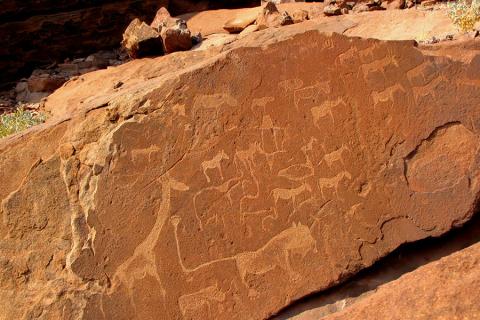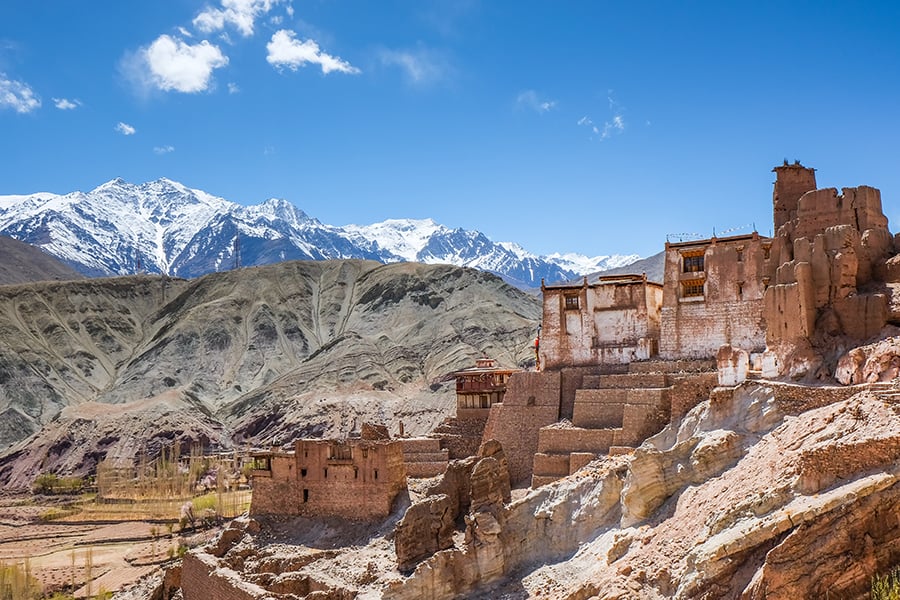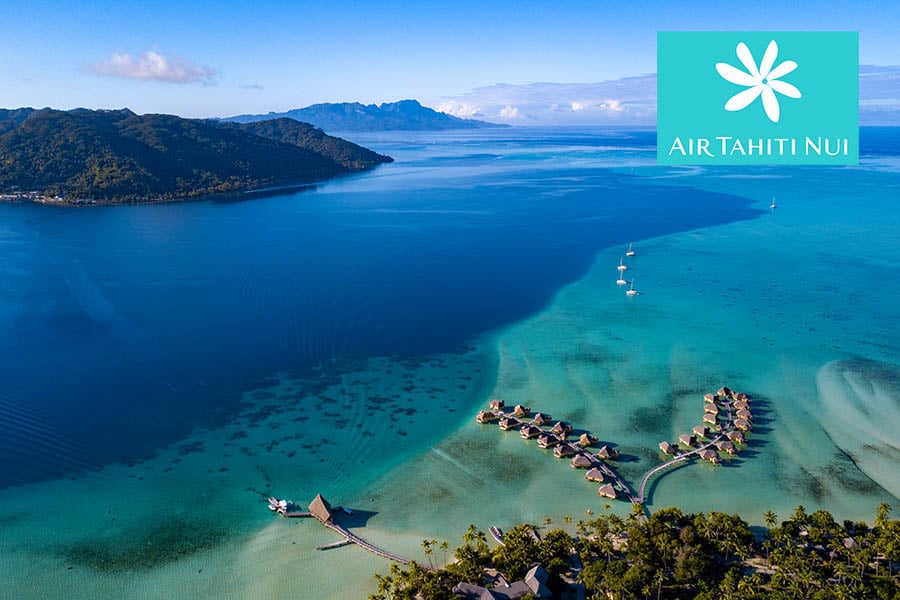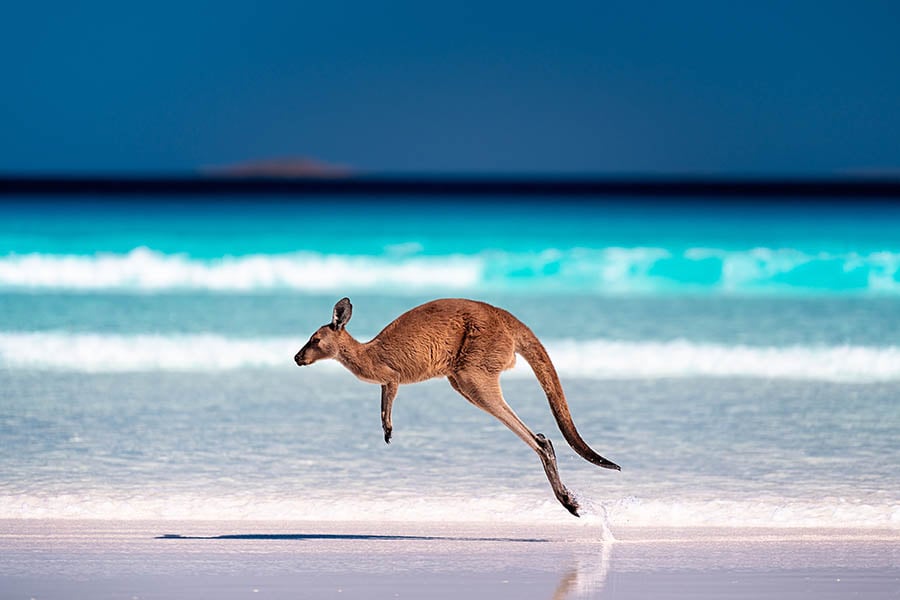
7 places you must see when you visit Namibia
To visit Namibia is to experience a country of huge blue skies, endless horizons, amazing sand dunes, a harsh but beautiful coastline, and a landscape full of game reserves. For me, Namibia is one of Africa’s most enticing destinations.
Travelling to Africa has always been a passion of mine but Namibia was going to be different as we’d planned a self-drive around one of the most diverse countries I’ve ever visited. Every one of my colleagues that I had spoken to about Namibia told me it was the best country they’d ever been to - could this really be true?
Arriving in Windhoek and preparing for the drive
We flew with Air Namibia to the capital, Windhoek and had our 10-day self-drive, accommodation and 4-wheel drive vehicle all pre-booked.
There are only two fully tarmacked roads in Namibia so a 4x4 vehicle is highly recommended. Before our road trip started, we’d also been given the heads up to visit a local supermarket to buy an ‘esky’ to hold some ice, cold drinks and some beers.
In Windhoek, we stayed the night at the Olive Grove Guesthouse, 5 minutes’ drive from the city centre. Windhoek is one of the calmest capital cities you’ll find; it’s pretty safe and not too busy, with some great bars and restaurants.
1. Sesriem and the Naukluft Mountains

From Windhoek, we drove south-west to the Sesriem area, through the spectacular Naukluft Mountains.
We stayed in The Desert Homestead, set in a wide grassy valley and sheltered by the Nubib, Tsaris and Naukluft mountains about 3km north of the Sossusvlei dunes. There are 20 thatched, en-suite chalets, all prettily decorated in pale linens and dark wood furniture with double or twin beds and en-suite bathrooms. Each room has its own canopied veranda with views of the Rotterkaum Mountains.
The hotel offers plenty of local activities but I would recommend the sunset horse-ride. Another great choice is to go for a sunset drive and stop at any of the scenic viewpoints for drinks and snacks. Sesriem (the gateway to Sossusvlei) is about forty minutes’ drive from the Desert Homestead, so the lodge is well located for exploring the sand dunes. I’d recommend a minimum stay of two nights here, so you can relax and enjoy the beautiful scenery.
2. Sossusvlei

The following day we awoke early and drove to the Sossusvlei National Park. It opens at sunrise and this is the best time of day to see the dunes. It’s really worth the early start as those first few hours of daylight are superb for photography and it’s also not too hot. There’s an N$90 entrance fee to visit the park.
A great destination year-round, Sossusvlei is possibly Namibia’s most spectacular and best-known attraction. Characterised by the large red sand dunes that surround it, Sossusvlei is a large, white, salt and clay pan. These are some of the highest dunes in the world; reaching almost 400 metres, they provide photographers with endlessly wonderful vistas in the beautiful morning and evening light – this impressive landscape is one of the most photographed in the world.
There are several things to see in this area: Sesriem Canyon (the second best-known attraction), a canyon that’s about a mile long and 30m deep, Dune 45 (a beautiful ‘star dune’), Hiddenvlei and Deadvlei (meaning ‘dead marsh’ because of an expanse of dead trees within the dunes). We walked to Deadvlei, which is a bizarre collection of ancient camelthorn trees. You can get great views over it if you climb the dunes, it really is an amazing place.
3. Swakopmund

After two wonderful days exploring Sesriem and Sossusvlei, we drove north towards the German town of Swakopmund, meaning 'mouth of the Swakop river'. A couple of hours’ drive north of the dunes, you’ll find that the landscape changes completely, becoming flat for as far as the eye can see.
Swakopmund makes a great base if you want to visit the coast and Walvis Bay. German architecture and wonderful guesthouses give you a sense of history and the seafood restaurants here are definitely worth writing home about.
4. Walvis Bay

Walvis Bay is a harbour town which is home to some fantastic marine and birdlife, and the best oysters in the world outside of Galway Bay! I recommend taking a catamaran cruise here because you’ll be amazed by the beauty of the bay, seal colonies, pelicans and the remote islands. It feels a world away from the desert, yet the desert is still in view.
5. The Skeleton Coast

As you drive up the Skeleton Coast from the Swakopmund River towards Angola, there is a vast expanse of desert. You’ll be driving on gravel roads with not a car or person to be seen for hours, save for the occasional old mining station from time to time. Just as you start thinking you’re on the road to nowhere, the landscape begins to change again, and rivers and more fertile land take over.
You’ll start to climb and before you know it, you’re into mountainous terrain. Perhaps unknown to most, the Grootberg Mountains are worth a visit. From here you stand at the top of a plateau, with Africa at your feet. There is truly something special about this place.
6. Damaraland

Driving further north, you reach Damaraland, an area rich in Namibian history. We stopped and stayed in Twyfelfontein where you can see hundreds of engravings, mostly depicting animals. Twyfelfontein Visitor Centre is perfect for a few hours of exploration. Driving to and from these, you will often encounter traditional donkey carts and tiny roadside stalls selling gemstones and seed pod mobiles.
7. Etosha National Park

The final leg of our self-drive took us to Etosha National Park which is a few hours’ drive from Damaraland, to the north of the country.
Etosha is the largest game reserve in Namibia and home to elephants, lions, zebra, impala, Thompson’s Gazelles and kudu - and you get to experience it in your own vehicle. Think of it as a safari park, but much, much better! Spotter stations around the park advise you on where you might find the game, where to track down the pride, or where the nearest drinking hole might be, and then it’s up to you to find your route and explore!
My route

I flew directly into and out of Windhoek, the capital, but you can easily visit Namibia as part of a multi-stop itinerary, either with multiple stops in Africa or on a round the world ticket.
I hired a 4WD vehicle for 10 days, collecting it from and returning it to the airport in Windhoek. I'd recommend hiring a 4WD vehicle, but it's also possible to rent a campervan and camp locally on a 'guest farm' staying and eating with a family - a bit like a homestay. I can arrange vehicle hire that's suitable for your trip.
Tours in Namibia
You could self-drive this route by car or campervan or if you’re travelling alone, why not join a group tour? All of these Namibia group tours include Namibia and at least one other country.
If you’re looking for a longer Africa itinerary, you could try an overland tour, travelling for longer over more countries, by overland truck, for example:
Want to visit Namibia?
If you’d like to plan a holiday to Namibia or would like to include it in a wider Africa or round the world itinerary, we can help. We can make bespoke arrangements for flights, transfers, accommodation, vehicle hire and any tours, and give you tips on where to visit and how long to stay.

About the author Milly Gill
Product Manager
Fresh out of high school, Milly left her home comforts behind and set off to work in a school in Thailand for a year. Whilst working in Thailand she managed to explore Vietnam, Cambodia, Malaysia and China before uni. In the breaks from her English & American Literature degree she interned for Travel Nation, eventually joining our team in 2014. Milly is fascinated by wildlife and food and weaves these elements into both her own trips and those she plans for others. Her natural instinct for building fascinating trips that take you off the beaten track inform the trips she plans and she currently works as our Product Manager sourcing great hotels and itineraries for our customers.

Last trip:
Antarctica















